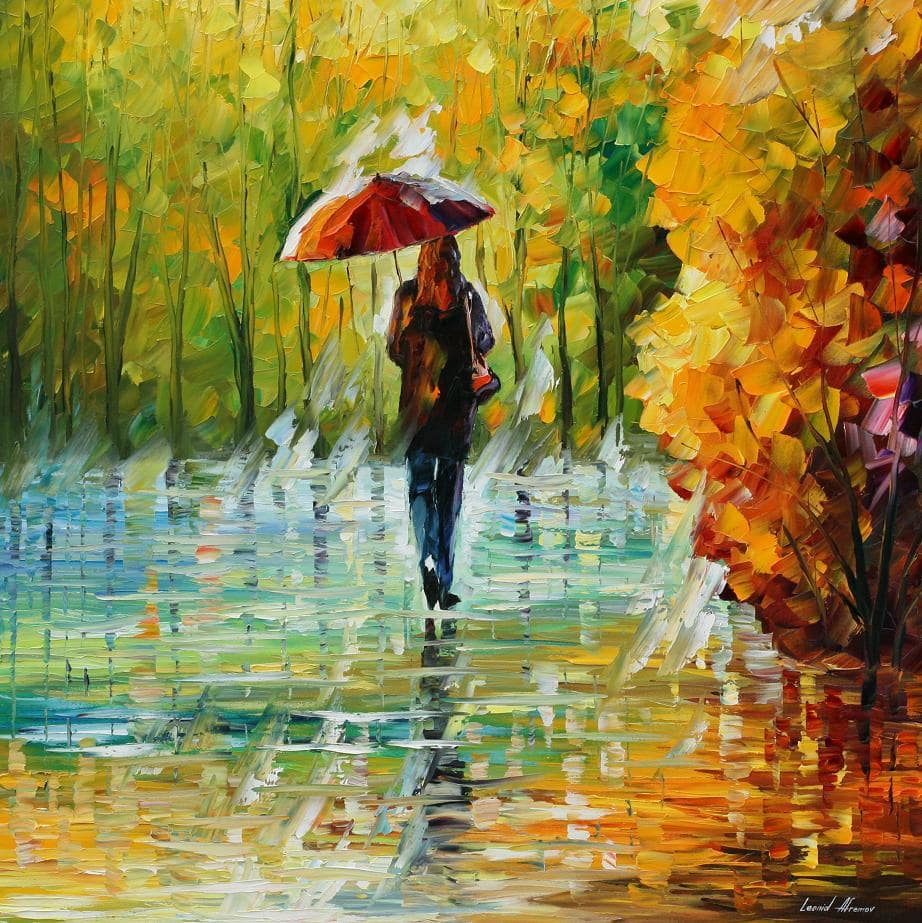Exhibit-Worthy Home Decor: Oil Paintings for Sale
Exhibit-Worthy Home Decor: Oil Paintings for Sale
Blog Article
Discovering Everything About Oil Paints: A Guide to Comprehending Their Elegance and Worth
Oil paints have actually captivated target markets for centuries, supplying a look into the imaginative proficiency of different eras. Their rich background is linked with ingenious strategies and profound psychological expression. Comprehending the materials and techniques behind these art work can enhance gratitude. In addition, the market for oil paintings offers opportunities for enthusiasts and financiers alike. As one explores this remarkable globe, the inquiry arises: what makes an oil painting truly beneficial?
The History of Oil Paint: A Journey With Time
Oil paint has roots that date back to ancient times, it genuinely prospered throughout the Renaissance, when musicians found its convenience and abundant shade possibility. Early examples can be mapped to the 7th century, with strategies developing especially across cultures. The tool came to be prominent in Northern Europe in the 15th century, specifically with the works of artists like Jan van Eyck, that pioneered its usage for detailed realistic look and dynamic shades. This period marked a departure from tempera paints, enabling better depth and structure. As oil paint spread, it influenced many musicians, resulting in masterpieces by renowned figures such as Leonardo da Vinci and Rembrandt. The medium's legacy continues, forming the art world well right into modern times.
Recognizing Oil Paints: Products and Techniques
As artists explore the world of oil paints, they run into a varied range of materials and methods that specify this tool. The key parts of oil paint consist of pigments, which offer shade, and drying out oils, such as linseed, that bind the pigments and facilitate application. Different additives can change the paint's texture and drying time, enhancing versatility. Techniques like glazing, where clear layers are accumulated, and impasto, which involves applying thick paint, enable various visual impacts. In addition, using brushes, combination knives, and also fingers can produce distinct textures and finishes. Recognizing these products and strategies enables musicians to totally share their creativity and attain the preferred impact in their art work.
The Function of Shade in Oil Paints
Color plays a critical function in oil paints, affecting both aesthetic allure and psychological vibration. Understanding shade concept fundamentals, consisting of the relationships between hues, can boost an artist's capacity to convey state of mind and ambience. Additionally, understanding shade blending methods permits greater deepness and splendor in a paint's combination.

Shade Concept Fundamentals
Comprehending shade theory is crucial for musicians dealing with oil paints, as it develops the structure for producing harmonious and visually appealing structures. Shade concept incorporates the research study of how shades communicate, the shade wheel, and the partnerships in between key, additional, and tertiary colors. Musicians utilize complementary colors to enhance contrasts and develop focal points, while similar colors advertise unity and cohesiveness within a piece. Additionally, the ideas of cozy and cool colors affect the perception of deepness and room in a painting. Understanding these concepts permits musicians to adjust shade efficiently, leading the audience's eye and communicating their desired message. Mastery of shade concept inevitably improves a musician's capacity to convey feelings and ideas with their work.
Psychological Influence of Color
The emotional effect of shade in oil paintings plays an important function in exactly how viewers perceive and connect with art work. Colors stimulate specific feelings and state of minds, affecting the customer's emotional state. Cozy shades like reds and oranges can develop a sense of heat and power, while amazing tones such as blues and environment-friendlies usually evoke calmness or self-questioning. Artists purposefully pick shade schemes to boost narrative aspects, directing the audience's emotional trip. The saturation and comparison of shades even more intensify these impacts, attracting attention and producing emphasis. Eventually, the interaction of shades in oil paints not just boosts their visual charm however additionally works as a powerful tool for psychological expression, enriching the customer's experience and analysis.
Color Combining Techniques
While numerous facets of oil painting add to the overall structure, understanding shade mixing strategies is important for achieving wanted impacts and deepness. Color mixing can be approached through different methods, including the subtractive and additive processes. Additive blending entails combining colors of light, while subtractive blending relies upon pigments, where shades blend to develop new shades. Artists commonly use a minimal palette to create unified jobs, recognizing the connections in between key, additional, and tertiary colors. Methods such as glazing and scumbling further improve depth and luminosity. By skillfully blending shades, an artist can stimulate emotions, create centerpieces, and achieve a feeling of realism, inevitably boosting the paint's visual and emotional influence.
Famous Oil Painters and Their Iconic Works

Famous for their proficiency of color and method, oil painters have actually developed some of the most popular art work in history. Prominent artists like Vincent van Gogh astounded audiences with his stirring brushwork in "Starry Night," while Claude Monet's "Perception, Dawn" prepared for Impressionism. Leonardo da Vinci's "Mona Lisa" stays an enduring sign of imaginative genius, showcasing his ability in catching human expression. Rembrandt's "The Evening Watch" illustrates his innovative use of light and shadow. Other noteworthy numbers include Pablo Picasso, who changed modern art with his vibrant trial and error in jobs like "Les Demoiselles d'Avignon," and Georgia O'Keeffe, whose lively representations of landscapes and flowers more info assisted specify American modernism. Each musician's special style added greatly to the oil painting landscape.
Just how to Evaluate the Quality of an Oil Paint
Reviewing the high quality of an oil painting includes a careful assessment of workmanship strategies, in addition to an analysis of shade and composition. Observing brushwork, layering, and the application of paint can reveal the artist's skill level. Additionally, the interaction of shades and the overall setup of elements contribute significantly to the painting's visual value.
Evaluating Craftsmanship Techniques
A careful assessment of craftsmanship strategies is essential for identifying the top quality of an oil painting. Evaluators must initially analyze the application of paint; thick, textured brushstrokes may recommend a knowledgeable hand, while excessively consistent applications might show a lack of depth. oil paintings for sale. The layering strategy is likewise important; the existence of glazes and varied density can improve brightness and intricacy. Furthermore, the high quality of the materials used, such as the canvas and pigments, plays a considerable function in toughness and general visual. Attention to information in elements like sides and shifts in between shades shows the musician's commitment to their craft. Inevitably, these methods add to the paint's psychological influence and market value, acting as indicators of the musician's skill and intent
Examining Shade and Composition
While examining the high quality of an oil painting, one need to concentrate on the interplay of color and make-up, as these components are fundamental to the artwork's general influence. Shade options can stimulate feelings and develop state of mind; as a result, the artist's scheme must be analyzed for consistency and comparison. A well-balanced structure directs the viewer's eye and produces a sense of unity. Artists typically use methods like the regulation of thirds or leading lines to boost visual interest. Furthermore, the usage of light and shadow can add deepness, enhancing the three-dimensionality of the paint. Eventually, a successful oil painting weds shade and composition, involving the viewer and welcoming a deeper admiration of the musician's vision and strategy.
Caring for and Preserving Oil Paintings
Appropriate care and preservation of oil paints is important for keeping their honesty and long life. To shield these art work, it is vital to present them far from direct sunlight, which can create fading and discoloration. Preserving a stable environment with regulated temperature and moisture more aids in avoiding damages. Cleaning must be done carefully using a soft, dry towel, avoiding any rough chemicals that could hurt the paint or varnish. Regular examinations for signs of degeneration, such as flaking or fracturing, are recommended. When carrying or keeping oil paintings, correct cushioning and framework are required to prevent physical harm. Inevitably, attentive treatment adds to the aesthetic allure and value of oil paintings in time.
The Marketplace for Oil Paints: Accumulating and Investing
Recognizing the market characteristics for oil paintings is important for collectors and investors alike. The value of these art work is affected by different variables, consisting of the artist's credibility, historic importance, and existing patterns. Collection agencies frequently seek items that resonate directly while taking into consideration possible recognition in worth. Public auctions and galleries offer as key venues for buying and marketing, with rates varying based upon demand and rarity. Purchasing oil paintings calls for research right into the marketplace, in addition to an understanding of credibility and provenance. Additionally, emerging artists might provide possibilities for substantial returns, while established names can command high costs. On the whole, a calculated approach to accumulating can produce both aesthetic satisfaction and financial rewards.

Regularly Asked Questions
What Are the Environmental Effects of Oil Painting Products?
The environmental impacts of oil painting products include the release of volatile organic compounds (VOCs), hazardous waste generation, and resource removal for pigments. These aspects contribute to pollution and eco-friendly deterioration, raising concerns among ecologically aware musicians and consumers.
How Do Various Canvases Influence Oil Painting Results?
Various canvases influence oil painting results significantly. Surface area, absorbency, and appearance quality can alter paint application, drying out times, and shade vibrancy. Musicians commonly pick details canvases to achieve wanted impacts and enhance their artistic expression.
Can Oil Paintings Be Restored if Harmed?
Oil paintings can undoubtedly be brought back if harmed. Expert conservators make use of different methods to fix splits, clean surface areas, and address staining, making certain that the art work retains its initial appeal and worth for future generations.
What Are the Indications of an Original Oil Painting?
The indications of an original oil paint include noticeable brush strokes, texture variations, and an unequal canvas weave (oil paintings for sale). Additionally, authenticity may be validated through provenance, signatures, and the visibility of a varnish layer unique to oil mediums
Exactly How Has Technology Influenced Modern Oil Paint Techniques?
Innovation has greatly influenced contemporary oil paint techniques by presenting digital tools for planning, enhanced materials for structure and long life, and on-line platforms for offering and sharing art, thus increasing artists' innovative possibilities and target market reach. Oil painting has roots that date back to old times, it truly prospered throughout the Renaissance, when musicians discovered its adaptability and rich color possibility. The psychological influence of shade in oil paintings plays a crucial duty in just how audiences attach and regard with art work. While numerous elements of oil painting add to the overall composition, understanding color blending methods is essential for attaining preferred results and depth. Examining the top quality of an oil painting involves a mindful evaluation of workmanship techniques, as well as an analysis of color and structure. While reviewing the top quality of an oil painting, one have to concentrate on the interplay of shade and structure, as these components are essential to the artwork's total effect.
Report this page